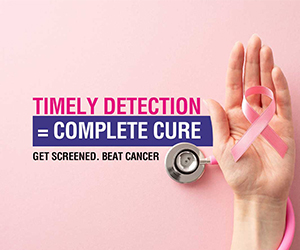Essential Sexual Health Terminology: A Comprehensive Guide to Medical Terms
Master essential sexual health terminology with clear definitions of medical terms, anatomical language, and clinical vocabulary used in reproductive and sexual healthcare.

Understanding medical terminology related to sexual health is crucial for effective communication with healthcare providers, making informed decisions about your health, and accessing reliable information about sexual and reproductive wellness. This comprehensive guide provides clear, accurate definitions of essential medical terms used in sexual health contexts, from basic anatomy to complex clinical concepts. Having this vocabulary empowers individuals to engage more confidently in healthcare discussions while reducing confusion and anxiety that can arise from unfamiliar medical language.
Anatomical Terminology
External Genital Anatomy
The vulva refers to the external female genital structures, including the mons pubis, labia majora, labia minora, clitoris, vaginal opening, and perineum. This term is often confused with "vagina," but the vulva specifically describes the external structures visible without internal examination.
The clitoris is a highly sensitive organ containing over 8,000 nerve endings, with both external and internal components. The visible portion (glans clitoris) is only a small part of the larger clitoral structure that extends internally around the vaginal opening.
Labia majora are the larger, outer folds of the vulva that contain fatty tissue and become covered with pubic hair during puberty. Labia minora are the smaller, inner folds that surround the vaginal and urethral openings and vary significantly in size, shape, and color among individuals.
The penis consists of three main parts: the root (attached to the pelvic bones), the shaft (body), and the glans (head). The shaft contains three cylinders of erectile tissue called the corpora cavernosa and corpus spongiosum, which fill with blood during arousal to create erection.
The scrotum is the pouch of skin containing the testicles, which hangs outside the body to maintain optimal temperature for sperm production. The dartos muscle in the scrotal wall contracts and relaxes to regulate testicular temperature.
Internal Reproductive Anatomy
The vagina is a muscular canal extending from the vaginal opening to the cervix, typically 3-6 inches in length. The vaginal walls are highly elastic and can expand significantly during arousal and childbirth.
The cervix is the lower, narrow portion of the uterus that extends into the vagina. It produces mucus that changes consistency throughout the menstrual cycle and serves as a barrier between the vagina and upper reproductive tract.
The uterus is a hollow, muscular organ where fetal development occurs during pregnancy. The endometrium (uterine lining) thickens and sheds cyclically during menstruation in response to hormonal changes.
Fallopian tubes extend from each side of the uterus toward the ovaries, providing the pathway for eggs to travel from the ovaries to the uterus. Fertilization typically occurs within the fallopian tubes.
Ovaries are almond-sized organs that produce eggs (ova) and hormones including estrogen and progesterone. Women typically have two ovaries that alternate releasing eggs during each menstrual cycle.
The prostate gland is a walnut-sized organ in males that surrounds the urethra and produces fluid that nourishes and transports sperm. Prostate fluid makes up about 30% of seminal fluid volume.
Physiological Processes and Functions
Menstrual Cycle Terminology
Menstruation refers to the monthly shedding of the endometrial lining when pregnancy does not occur, typically lasting 3-7 days with average cycles ranging from 21-35 days.
Ovulation is the release of a mature egg from the ovary, typically occurring around day 14 of a 28-day cycle but varying significantly among individuals and cycles.
The follicular phase encompasses the first half of the menstrual cycle, from menstruation through ovulation, characterized by rising estrogen levels and endometrial thickening.
The luteal phase occurs after ovulation through the start of the next menstruation, characterized by progesterone production from the corpus luteum and potential implantation if fertilization occurs.
Dysmenorrhea refers to painful menstruation, which can be primary (no underlying medical condition) or secondary (caused by conditions like endometriosis or fibroids).
Amenorrhea is the absence of menstruation, classified as primary (never having had a period by age 16) or secondary (absence of periods for three or more months in someone who previously menstruated).
Sexual Response and Function
The human sexual response cycle, as described by Masters and Johnson, includes four phases: excitement, plateau, orgasm, and resolution, though individual experiences may vary significantly from this model.
Arousal encompasses both psychological and physiological responses to sexual stimulation, including increased blood flow to genital tissues, increased sensitivity, and preparation for sexual activity.
Orgasm is the peak of sexual pleasure characterized by rhythmic contractions of pelvic muscles, intense pleasurable sensations, and release of sexual tension.
The refractory period is the recovery time after orgasm during which additional orgasms are difficult or impossible to achieve, typically more pronounced in males than females.
Libido refers to sexual desire or interest in sexual activity, which can be influenced by hormonal, psychological, social, and relationship factors.
Clinical Conditions and Disorders
Sexual Dysfunction Terminology
Erectile dysfunction (ED) is the persistent inability to achieve or maintain an erection sufficient for sexual activity. It can have physical or psychological causes and affects men of all ages, though prevalence increases with age.
Premature ejaculation is ejaculation that occurs sooner than desired, typically within one minute of penetration, and causes distress for the individual or couple.
Delayed ejaculation refers to difficulty reaching orgasm despite adequate stimulation and desire, which can cause distress and relationship difficulties.
Female orgasmic disorder involves persistent difficulty reaching orgasm despite adequate stimulation and arousal, which can be situational or generalized.
Vaginismus is the involuntary contraction of vaginal muscles that makes penetration difficult or impossible, often associated with anxiety or fear related to sexual activity.
Vulvodynia is chronic vulvar pain without an identifiable cause, characterized by burning, stinging, or irritation that can interfere with sexual activity and daily life.
Dyspareunia refers to persistent pain during sexual intercourse that can have physical or psychological causes and affects both males and females.
Sexually Transmitted Infections (STIs)
Chlamydia is a bacterial infection that often causes no symptoms but can lead to serious reproductive health complications if untreated, including pelvic inflammatory disease and infertility.
Gonorrhea is a bacterial infection that can affect the genitals, rectum, and throat, often asymptomatic but potentially causing serious complications including pelvic inflammatory disease.
Herpes simplex virus (HSV) exists in two types: HSV-1 (typically oral herpes) and HSV-2 (typically genital herpes), though both can cause infections in either location.
Human papillomavirus (HPV) encompasses over 100 virus types, some causing genital warts and others associated with cervical and other cancers. Vaccines are available for prevention.
Syphilis is a bacterial infection that progresses through distinct stages if untreated, potentially causing serious health complications including neurological and cardiovascular problems.
HIV (Human Immunodeficiency Virus) attacks the immune system and can progress to AIDS (Acquired Immunodeficiency Syndrome) if untreated, though modern treatments allow people with HIV to live normal lifespans.
Contraception and Family Planning
Contraceptive Methods
Hormonal contraception includes methods that use synthetic hormones to prevent pregnancy, such as birth control pills, patches, rings, injections, and implants.
Barrier methods prevent sperm from reaching the egg through physical barriers, including condoms, diaphragms, cervical caps, and contraceptive sponges.
Intrauterine devices (IUDs) are T-shaped devices inserted into the uterus to prevent pregnancy, available in hormonal and copper varieties with varying durations of effectiveness.
Emergency contraception refers to methods used after unprotected intercourse to prevent pregnancy, including emergency contraceptive pills and copper IUD insertion.
Sterilization involves permanent procedures to prevent pregnancy, including tubal ligation for females and vasectomy for males.
Fertility and Reproduction
Conception occurs when a sperm fertilizes an egg, typically in the fallopian tube, beginning the process of pregnancy.
Implantation is the attachment of a fertilized embryo to the uterine wall, typically occurring 6-12 days after conception.
Fertility refers to the ability to conceive and carry a pregnancy to term, influenced by age, health, and various lifestyle factors.
Infertility is defined as the inability to conceive after 12 months of regular unprotected intercourse (or 6 months for women over 35).
Assisted reproductive technology (ART) includes medical procedures to help achieve pregnancy, such as in vitro fertilization (IVF), intracytoplasmic sperm injection (ICSI), and gamete donation.
Pregnancy and Prenatal Care
Gestation refers to the period of fetal development from conception to birth, typically lasting 40 weeks from the last menstrual period.
Trimesters divide pregnancy into three approximately equal periods, each characterized by different developmental milestones and potential symptoms.
Prenatal care encompasses medical supervision and health promotion during pregnancy to ensure optimal outcomes for both mother and baby.
Morning sickness refers to nausea and vomiting during pregnancy, most common in the first trimester though it can occur throughout pregnancy.
Preeclampsia is a pregnancy complication characterized by high blood pressure and protein in urine, potentially dangerous for both mother and baby.
Diagnostic Procedures and Tests
Screening and Testing
Pap smear (Papanicolaou test) screens for cervical cancer by collecting cells from the cervix to examine for abnormal changes.
STI testing involves various methods to detect sexually transmitted infections, including blood tests, urine tests, and swab samples from affected areas.
Pregnancy tests detect human chorionic gonadotropin (hCG) hormone in urine or blood to confirm pregnancy.
Ultrasound uses sound waves to create images of internal structures, commonly used during pregnancy and to diagnose various reproductive health conditions.
Mammography is specialized breast X-ray screening used to detect breast cancer, typically recommended annually for women over 40 or based on risk factors.
Hormonal and Laboratory Terms
Estrogen is a group of hormones responsible for female sexual development and reproductive function, also present in males in smaller amounts.
Progesterone is a hormone that regulates the menstrual cycle and maintains pregnancy, produced primarily by the ovaries and placenta.
Testosterone is the primary male sex hormone responsible for male sexual development and function, also present in females in smaller amounts.
Luteinizing hormone (LH) triggers ovulation in females and testosterone production in males, with LH surge detection used in fertility tracking.
Follicle-stimulating hormone (FSH) stimulates egg development in females and sperm production in males, with levels used to assess fertility and menopausal status.
Treatment and Intervention Terms
Therapeutic Approaches
Hormone replacement therapy (HRT) involves supplementing hormones to treat deficiency conditions, commonly used for menopausal symptoms.
Fertility treatments encompass various medical interventions to help achieve pregnancy, from medication to stimulate ovulation to complex assisted reproductive technologies.
Sexual therapy involves counseling and behavioral interventions to address sexual dysfunction and improve sexual satisfaction and relationships.
Antibiotics are medications used to treat bacterial sexually transmitted infections such as chlamydia, gonorrhea, and syphilis.
Antiviral medications treat viral infections like herpes and HIV, often suppressing symptoms and reducing transmission risk.
Surgical Procedures
Hysterectomy is surgical removal of the uterus, performed for various medical conditions including cancer, fibroids, and severe endometriosis.
Laparoscopy is minimally invasive surgery using small incisions and a camera to diagnose and treat various reproductive health conditions.
Dilation and curettage (D&C) involves dilating the cervix and scraping the uterine lining, used for diagnostic purposes and to treat various conditions.
Vasectomy is a minor surgical procedure to cut or block the vas deferens to prevent sperm from mixing with semen, providing permanent male contraception.
Tubal ligation involves blocking or cutting the fallopian tubes to prevent eggs from reaching the uterus, providing permanent female contraception.
Contemporary and Emerging Terms
Modern Sexual Health Concepts
Sexual wellness encompasses the integration of physical, emotional, intellectual, and social aspects of sexual being in positive and enriching ways.
Consent refers to freely given, informed, and revocable agreement to engage in sexual activity, requiring ongoing communication throughout sexual encounters.
Sexual health rights recognize sexuality as a fundamental aspect of human health and wellbeing, including the right to sexual information, education, and healthcare.
Comprehensive sexual education provides age-appropriate, medically accurate information about sexuality, relationships, and reproductive health across the lifespan.
Technology and Innovation
Telemedicine involves providing healthcare services remotely using technology, increasingly used for sexual health consultations and services.
Digital therapeutics use evidence-based software interventions to treat medical conditions, including apps for sexual dysfunction and reproductive health tracking.
Precision medicine tailors medical treatment to individual characteristics, including genetic factors that influence contraceptive effectiveness and disease risk.
Understanding Medical Communication
Healthcare Navigation
Medical history refers to comprehensive information about an individual's past and current health status, essential for appropriate sexual health care.
Informed consent involves understanding the risks, benefits, and alternatives of medical treatments before agreeing to procedures or interventions.
Confidentiality protects patient health information from unauthorized disclosure, particularly important in sexual health contexts.
Cultural competency involves healthcare providers understanding and respecting diverse cultural perspectives on sexuality and health.
Professional Terminology
Gynecology is the medical specialty focusing on female reproductive health, including preventive care, diagnosis, and treatment of reproductive system conditions.
Urology is the medical specialty dealing with the urinary system and male reproductive system, including treatment of sexual dysfunction and fertility issues.
Reproductive endocrinology specializes in hormonal aspects of reproduction, fertility, and related conditions affecting both males and females.
Sexual medicine is an emerging medical field focusing specifically on sexual health, function, and dysfunction across all genders and ages.
This comprehensive guide to sexual health terminology provides the foundation for better understanding medical information, communicating effectively with healthcare providers, and making informed decisions about sexual and reproductive health. As medical knowledge continues to evolve, staying informed about current terminology helps ensure access to the best possible care and health outcomes.











